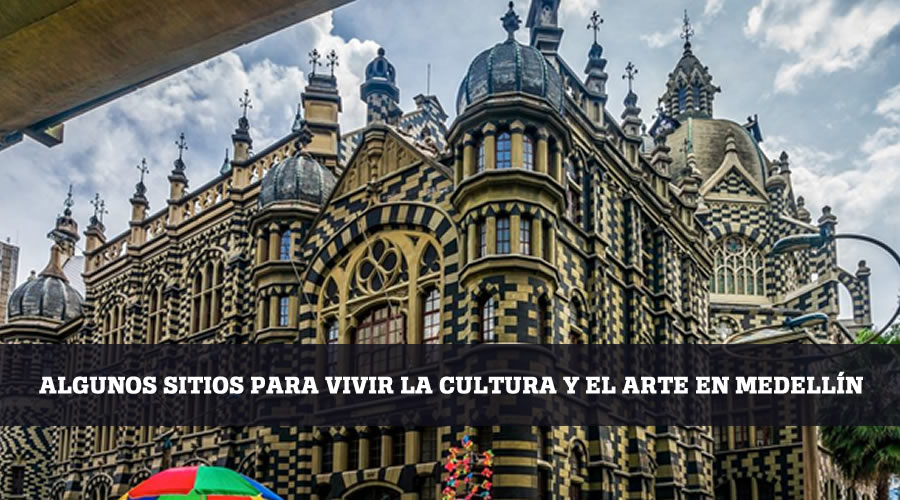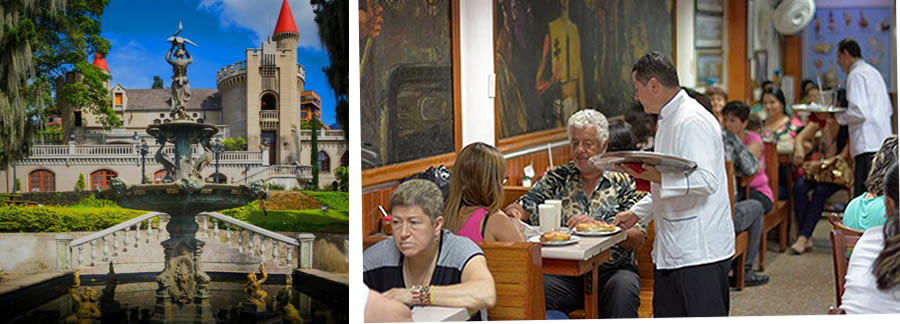Medellin It is well known, both by tourists and natives, for being the city with one of the best climates in the country, for being an example of innovation, for its friendly people, and also for the great changes that have made their way between drug trafficking, gang wars and lack of opportunities. It is for this last reason that the acclaimed Graffiti tour to commune thirteenIt is one of the most requested by tourists, both from the country and from other countries. Other almost obligatory sites for passing tourists are Guatapé and its so famous Peñol Stone, Garden and its waterfalls, the Arvi Park, some coffee farms to learn how origin coffee is made here. And inside the city, there is no shortage of visits to some market squares, the Botero square with its monumental sculptures, and recently, the Casa de la Memoria Museum, a small space created by the victims of the armed conflict in Colombia, to acknowledge the country's violent past and not repeat history.
All these spaces, between tourist and cultural, have represented economic growth for the city and the department in recent years, something very positive, but in some way they have also become a kind of exotic landscape. Sometimes they are places crowded with people, and on many occasions they have lost their true historical and cultural value, due to exacerbated tourism. To bring an example, just think of those who earn money by reviving the name of Pablo Escobar, tours around Moravia, where they can buy souvenirs del capo, or visits to the popular Hacienda Napoles. Many tourists heed the invitation to these spaces, attracted by the stories, the tales, the gossip, and perhaps to corroborate with their own eyes, that this man, almost turned into a legend, really existed.
Photo Taken from: http://blog.redbus.co/cultura/8-cosas-del-palacio-de-la-cultura-rafael-uribe-uribe/
However, there are many other interesting spaces in the city to visit, which perhaps allow tourists to be shown the other side of the coin that accompanies the city. Or maybe, just an alternative option for those interested in culture, who want to know a little about the ancient history of the city, the architecture, the artists, musicians and emblematic places. One of the places worth looking at in depth is the Museum of Antioch. Many foreign tourists come to the place attracted by the famous work of Fernando Botero, without some realizing that the place houses more than 500 works by different artists from Antioquia, Colombians and foreigners, ranging from pre-Hispanic art, through colonial works to contemporary art. A whole museum of historical art framed in the contemporary. And when it comes to architecture, the building itself goes hand in hand with the history of the city, since it was the Municipal Palace for more than 50 years. In the Art Deco style, it was designed by an architectural firm: HM Rodríguez, belonging to a family of renowned photographers, stonemasons and architects of the time.
Along the same lines, it is also worth visiting the Rafael Uribe Uribe Palace of Culture, also located in Plaza Botero. The building is in the Gothic style, quite crazy in a city like Medellin, which at the time, pretended to be the Latin American Paris. It was built at the end of the XNUMXth century, to be the seat of the government of Antioquia. Currently, it has the oldest elevator in the city, a library specializing in art and heritage, as well as constant art exhibitions.
Photo Taken From https://versallesmedellin.com/historia/
Taken from http://www.museoelcastillo.org/
Continuing with this route in the center of the city, the Versailles room It is a gastronomic, historical and traditional option to visit. Located in the emblematic Junín, pedestrian way boulevard, inspired by the traditional Parisian streets to walk, Versailles is a symbol of the cultural movement of Medellin in the second half of the XNUMXth century. Poets, musicians, artists, athletes and bohemians came to Versailles, all those who after “juninear” wanted to have a good coffee and talk. It was a temple of the Nadaistas and was visited by personalities such as Borges, Ernesto Sábato, Marta Traba and Manuel Mejía Vallejo from Antioquia.
Another interesting option to visit is the San Pedro Museum Cemetery, recognized for the sculptural and artistic wealth it houses. In 1842, when Medellín was still a small town: The town of Candelaria and with barely 9 inhabitants, a group of wealthy and distinguished men met who decided to create a decent cemetery for their family and that would honor their fortunes. The cemetery of the rich, as it was known then, currently has the title of museum, since presidents such as Carlos E. Restrepo, entire families of the time, the richest man and the one who brought the first car to the city are buried there. city: Carlos Coroliano Amador, and Colombian writer Jorge Isaac, among many others. In addition, it has works of art of great value including sculptures, statues and large mausoleums.
Finally, it is worth visiting the The Castle Museum, which houses the largest collection of decorative arts in the city. “The building, inspired by the castles of the Loire Valley in France, was built in 1930 in the medieval Gothic style by the first office of architects in Medellín, HM Rodríguez, as the country house of Mr. José Tobón Uribe, doctor and founder of the Pasteur Pharmacy, a pioneer in Medellin at the time. In 1942, it was acquired by the Antioquian philanthropist Diego Echavarría Misas, together with his wife Benedikta Zur Nieden, who expanded and decorated its spaces with valuable works of art from different currents, periods and places in Europe and America, to turn it into a cultural center by everyone's reach."[1]
Thus, the invitation is extended, not only to foreigners and tourists from the country, but also to the inhabitants, to know and recognize these spaces that tell a story through art and architecture in the city.
All the articles in this blog have been written by the teachers of our school and by students from different countries who traveled to Colombia to learn Spanish.
“You travel too and study Spanish in NUEVA LENGUA"
Follow us on our social networks:
RELATED VIDEOS
MEDELLÍN - GUADUAS



